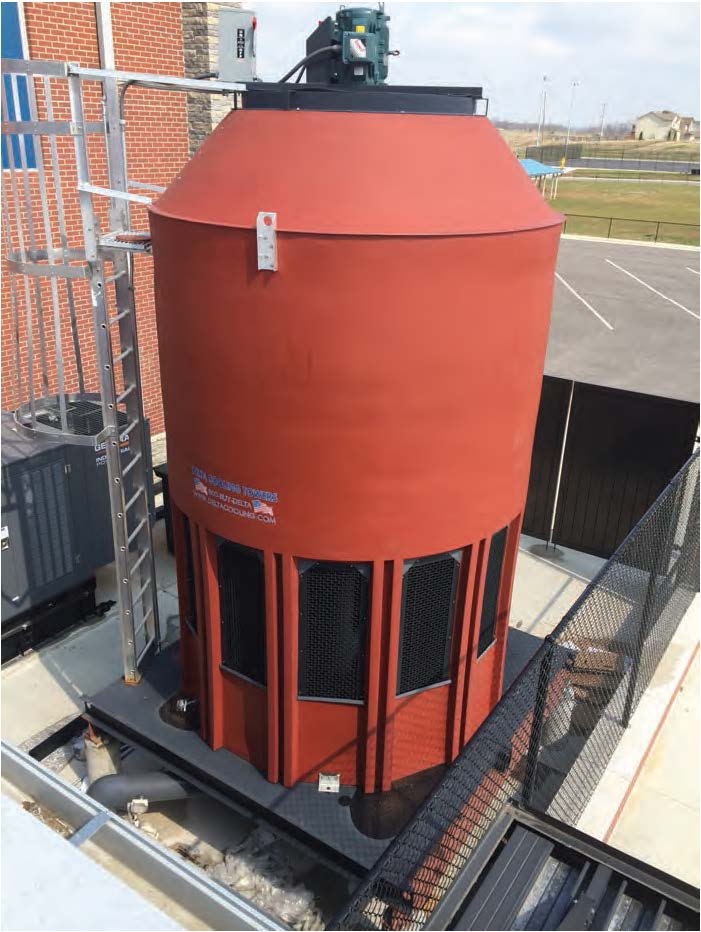
Industrial cooling towers might be one of the most crucial parts of any industrial or HVAC process. These tall open-topped, water-cooling structures are responsible for cooling equipment vital for industrial or HVAC comfort cooling processes. You may be surprised to learn that there is much more to these cooling towers than you ever knew.
An industrial cooling tower can perform its work in a number of ways, using a range of technologies to cool process water. Keep reading to better help you understand the differences between the types of cooling towers available today.
As their name implies, natural draft cooling towers rely on natural convection to circulate air throughout the tower, which then cools the water. Air movement occurs due to differences in density between the entering air and the internal air within the tower. Warm, moist air, which is denser than cool air, will naturally rise through the tower, while the dry, cool air from outside will fall, creating a constant cycle of airflow.
Unlike natural draft cooling towers, mechanical draft cooling towers employ fans or other mechanics to circulate air through the tower. Common fans used in these towers include propeller fans and centrifugal fans. Mechanical draft towers are more effective than natural draft towers, and can even be located inside a building with the proper exhaust system. However, they consume more power than natural draft cooling towers and cost more to operate as a result.
There are two types of mechanical draft cooling towers:
A. Crossflow Towers
In a crossflow tower, air flows horizontally through the cooling tower’s structure while hot water flows downward from distribution basins. Crossflow towers can be as tall as counterflow towers, but they’re also more prone to freezing and are less efficient.
B. Counterflow Cooling Towers
This type of cooling tower moves air upward through the tower while water flows downward to cool the air. These towers are often more compact in footprint than crossflow towers and can save energy in the long run.
Cooling towers can differ by build as well as heat transfer and air generation methods. When it comes to cooling tower build, there is the:
Selecting sizing for cooling towers is a heat-load calculation, based on your process, cooling needs, and your building’s HVAC.
When it comes to heat transfer methods, there are several types of cooling towers as well:
The cooling tower efficiency formula reads as: μ = (ti - to) 100 / (ti - twb), which may be tough to understand by just looking at it. Fundamentally, a cooling tower’s efficiency is measured in terms of approach and range. When the topic of efficiency is discussed, it usually has to do with the type of airflow used within the unit, not its heat transfer method or size.
A cooling tower will either be configured as a crossflow or a counterflow system. Counterflow (induced draft) systems are considered the most efficient of the two. Crossflow (forced draft) towers distribute hot water perpendicularly to the airflow, while counterflow towers distribute hot water directly into the airflow.
However, counterflow towers can be taller which impact sites with height restrictions. Counterflow towers also have the benefit of keeping the cooling media out of any sunlight, preventing potential bacterial issues (like Legionnaires' disease).
No matter what type of cooling tower you have, there are always ways to improve if you’re wondering how to increase cooling tower efficiency. Some things you can consider:
What are your thoughts on the different types of cooling towers? Delta, the technology-leading cooling tower supplier and cooling tower manufacturer in USA, rises above the standards of other manufacturers to provide a 20-year warranty, so you do not have to worry about periodic replacements. And, Delta’s high-quality cooling tower designs offer customers not only an extended lifecycle but also fewer moving parts and, therefore, less maintenance downtime. Have any questions or comments for us on maintaining successful cooling tower systems? Let us know. Or, click here to get your quote today!
From our low maintenance design to our manufacturing process to excellent customer service, we're sure you'll be pleased with our superior cooling towers, every step of the way. Get a quote